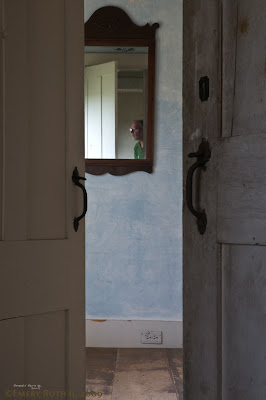
HENRY PEACH ROBINSON: "A picture should draw you on to admire it, not show you everything at a glance. After a satisfactory general effect, beauty after beauty should unfold itself, and they should not all shout at once . . . This quality [mystery] has never been so much appreciated in photography as it deserved. The object seems to have been always to tell all you know.. This is a great mistake. Tell everything to your lawyer, your doctor, and your photographer (especially your defects when you have your portrait taken, that the sympathetic photographer may have a chance of dealing with them), but never to your critic. He much prefers to judge whether that is a boathouse in the shadow of the trees, or only a shepherd's hut. We all like to have a bit left for our imagination to play with. Photography would have been settled a fine art long ago if we had not, in more ways than one, gone so much into detail. We have always been too proud of the detail of our work and the ordinary detail of our processes."
PHOTOGRAPHER'S JOURNAL: It's not of great importance, but this strikes me as an odd composition. I thought so when I framed it. What is it that makes a photographer take a stand at a particular spot and compose? Jane wondered why I didn't jump the fence. Well, I'd already been shooting those barns from the other side, and I was surprised at the way they turned up in an odd place with the big fence hogging the frame. Now that I see it, what I really like is the objective, offhand point of view. Does it suggest a moment in passing? The rational mind wants to take aim at the farmstead; make a picture about that farmstead. This composition interests me because it gets past that prejudice of the reasoning mind. It splits our attention. Two roads diverge...
It all depends on balance, I shot two versions. The rejected version placed the large post further right so it became a frame element; it made the all-too-diminished farmstead became the subject of the image. Here the fence post occupies prime real estate at the "thirds" position. How odd! And it leaves us with choices. The angled fence leading to the too-important fence post opens a second path, and it's no longer just about the farmstead. I'd have liked a bit more mist rising out of the Shepaug River valley just this side of the last hill. Maybe I'll watch this spot until it happens, but by then the horse will have moved.


















